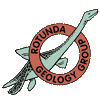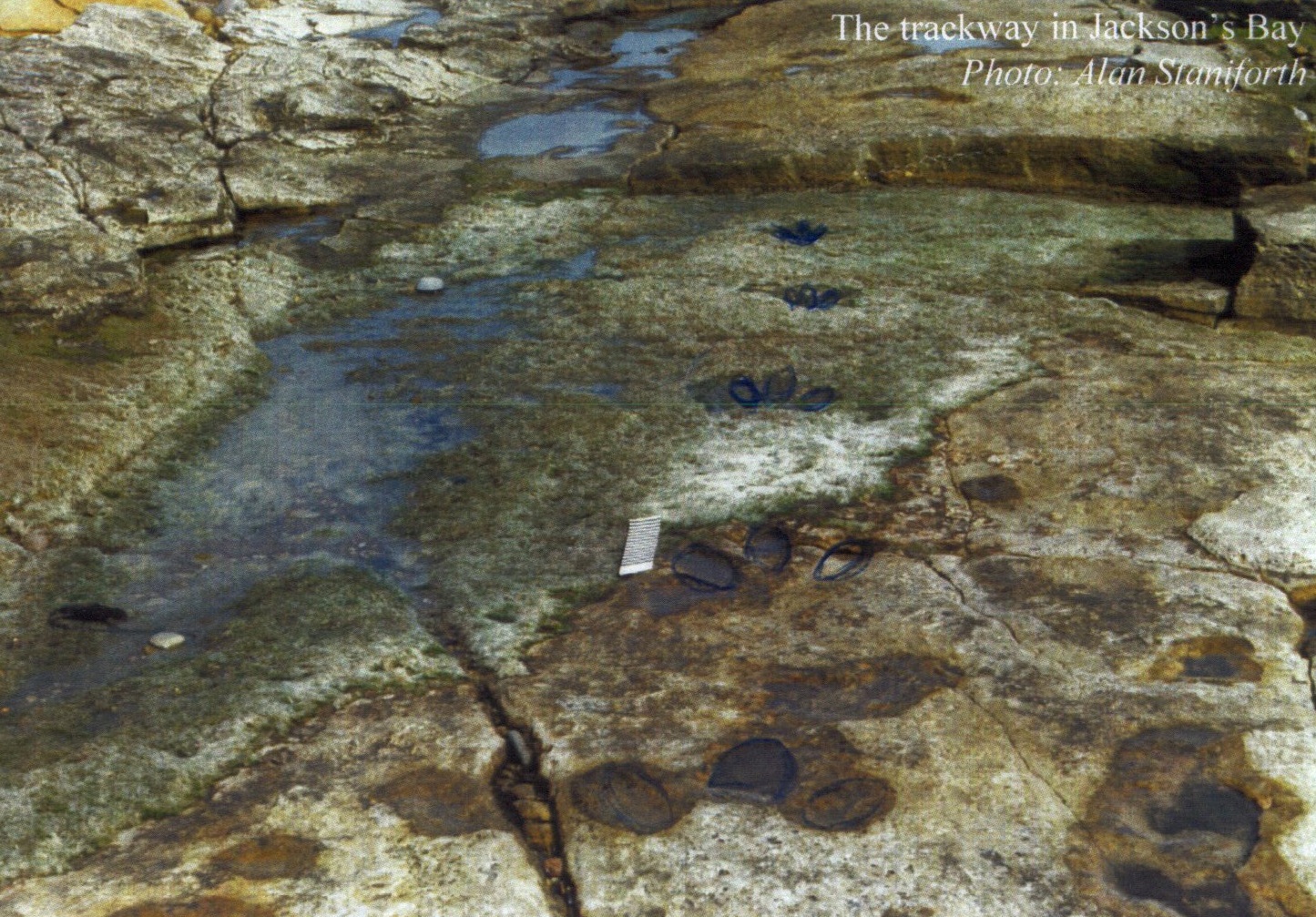The Yorkshire coast is renowned for the fossil reptilian footprints which have been discovered along its shores, notably as a result of the extensive research carried out in recent years by Mike Romano and Martin Whyte. However, the first footprint find on the Yorkshire coast was apparently discovered in Cayton Bay as far back as 1895 although no records remain. In 1907 the first authenticated find was made at Saltwick by a Mr Harold Brodrick and reported in the Annual Report of the Whitby & Literary Philosophical Society. The two small blocks were given to the Society and were recently ‘rediscovered‘ in Whitby Museum.
During the 1950s the dynamic curator of Woodend Natural History Museum, Geoffrey Watson, established a museum club for youngsters to encourage interest in geology and the living world. The club became extremely popular with groups meeting at Woodend on Saturday morning and also Friday evenings. As a young lad only just into double figures I joined the geology group and thus began a lifelong interest in rocks and fossils. (At the time it could just as easily have been birds, mammals or flowers!). Mr Watson encouraged us to explain our finds to members of the Scarborough Field Naturalists Society and it was there that I gave my first talk in public - a five minute presentation on fossil footprints! Geoffrey later went on to establish the Junior (later Young) Naturalists Association, a nationwide club which organised excursions, events, residential field courses and conferences for young people.
Cyril R Ivens, a strong museum supporter at the time, was also interested in geology and particularly the fossil footprints to be found along the local coastline. Cyril, myself and other lads from the geology group spend many happy hours searching the cliffs along Jacksons Bay and Burniston Bay during the 1950s and ‘60s. At that time, trace fossils were not regarded with the same interest that they enjoy today. A number of scattered finds were made and then in 1962 the first trackway to be discovered was found in Jacksons Bay by Cyril, myself and Dr John Wright. In all, nine large prints have been found tracing a track along an ancient Jurassic sandbank. A big stride between each print gives an indication of the size of the animal. When first discovered there were only eight prints exposed, the last in the stride ending just before a raised slab. Would there be further prints beyond? With the enthusiasm, folly and strength of youth a crowbar was brought into play and the slab loosened. Six months later the sea had completed the task but no ninth footprint was revealed. Nature may be chivvied but will not be rushed and it took natural processes many years before a ninth print was gradually exposed. In those days we were still talking about the Estuarine or Deltaic Series - much more descriptive than the present ‘Long Nab Member’.The exposure, around the mean high tide level, is still there 50 years on but obviously very worn.
In 1994 Geoffrey and Cyril published a short booklet describing the dinosaur footprints discovered in the area to that date and recently Cyril’s personal notes and a large number of photographs were passed to Scarborough Museums Trust for safe keeping. That circle is complete but finds continue to be made and perhaps one day the remains of a dinosaur with its foot in a print may be discovered!

